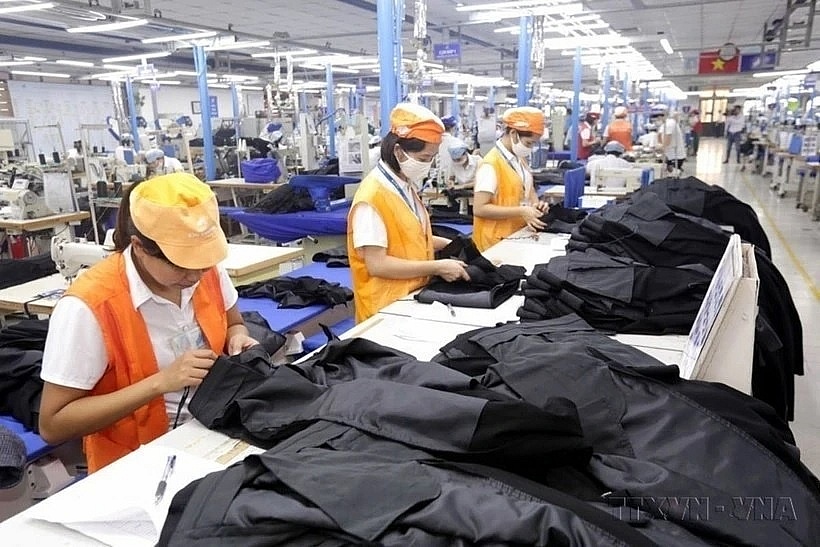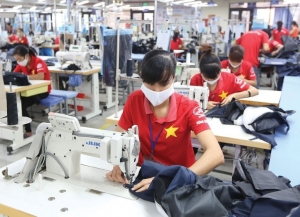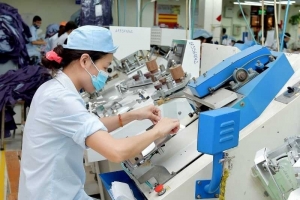Bangladeshi loss can be Vietnam’s gain in textiles
 |
| Bangladeshi loss can be Vietnam’s gain in textiles, Illustrative image (Photo: VNA) |
Bangladesh, one of the world’s top textile exporters, is grappling with domestic turmoil, with weeks of violent protests leading to telecommunications blackouts, curfews, and factory closures. According to Bangladesh’s The Business Post, many international buyers have cancelled orders or seek the order to others due to concern over the shipment deadline.
This is not the first time that Bangladesh’s textile industry has been affected by such disruptions. Last year, protests by garment workers also impacted manufacturing and delivery times for garment exports.
Sumetha Anand, CEO of Garcity, said, “The crisis in Bangladesh has caused significant disruptions in the global supply chain. Many international brands that rely heavily on Bangladeshi factories for their apparel production are now facing delays and uncertainty. This situation has forced brands to look for alternative manufacturing hubs to diversify their supply chains and mitigate risks,”
She explained that in response to the crisis, many global brands are re-evaluating their sourcing strategies. The trend towards China+1 sourcing, where brands diversify their production away from China, is now expanding to include Bangladesh+1. This shift could lead to a more balanced and resilient global supply chain, with production spread across multiple regions.
“Countries like Vietnam, India, Indonesia, and Ethiopia are well-positioned to capitalise on the current situation in Bangladesh. These nations are investing in their garment manufacturing infrastructure and are becoming increasingly attractive to global brands seeking reliable and cost-effective production alternatives,” she said.
In the same viewpoint, SSI Securities Corporation believed that the closure of many Bangladeshi factories due to concerns about violence could cause the textile supply chain to shift to other countries such as China, India, and Vietnam. In which, India will have a distinct advantage because it is a neighbouring country and the textile and garment industries of the two countries have close relations.
“India is both a source of cotton and an investor in many large garment factories in Bangladesh. For Vietnam, businesses that mainly produce for the European market and process for brands may benefit because buyers can more easily move orders,” said an SSI report released in early August.
Pham Van Viet, deputy chairman of the Ho Chi Minh City Textile and Garment Embroidery Association, said that on average, Bangladesh exports nearly $4 billion worth of textiles and garments to the EU, UK, and US markets each month. With the current situation, the instability in Bangladesh is difficult to resolve quickly, so disruption of the global textile and garment supply chain is inevitable.
“In terms of market share, before the protests and riots, Bangladesh was a direct competitor to Vietnam’s textile and garment industry. Therefore, when production activities in Bangladesh are disrupted, in theory, Vietnam’s textile and garment industry benefits. Vietnamese enterprises can receive more orders transferred by Bangladeshi customers in the short term to increase the speed of recovery after difficult times,” Viet said.
However, according to Viet, receiving more processing orders is not the biggest goal of Vietnam’s textile and garment industry because the country’s development strategy is different from Bangladesh’s. While Bangladesh relies almost entirely on outsourcing orders for brands and trademarks and competes with low-cost labour, Vietnam is oriented towards developing a textile industry with higher added value - the fashion industry.
Agribank Securities Company assessed that Vietnam’s textile and garment industry would benefit from the violence in Bangladesh. Garment exporting enterprises in Vietnam can receive orders shifting from this country. Currently, it is also the peak export season for garment products for the year-end festival season.
In the long term, it added, foreign-invested enterprises may consider finding a country to replace Bangladesh in the textile and garment supply chain, due to the instability and potential risks of disruption, and Vietnam is a country with many advantages.
The Vietnam Textile and Apparel Association quoted information from the Business Standard newspaper of Bangladesh saying that many Bangladeshi textile and garment exporting enterprises are witnessing a 25-40 per cent decrease in the number of orders. Export prices are also suffering a decline.
Vietnam’s textile and garment export turnover in 2023 reached $40.3 billion, down 9 per cent compared to the previous year. This year so far, textile and garment exports has made a breakthrough in terms of markets and products, with up to 36 items and products of all kinds exported to over 100 territories. The textile and garment industry’s export target of over $45 billion this year is feasible, according to the Vietnam Textile and Apparel Association.
 | Positives signs for garments and textiles Figures from the General Department of Vietnam Customs show that Vietnam’s export value of garments and textiles rose 9.15 per cent to $392 million and 3.2 per cent to $3.2 billion respectively in July. |
 | Garments and textiles sector hoping to exploit 'green' recovery Many garments and textiles firms are focussing their investment on 'greening' their production processes to position themselves for the upcoming recovery period. |
 | Garment orders rise but costs still surge Vietnam’s garments and textiles have witnessed a bright picture so far this year, but the remaining months could be difficult if the industry is to reach its annual target. |
What the stars mean:
★ Poor ★ ★ Promising ★★★ Good ★★★★ Very good ★★★★★ Exceptional
Related Contents
Latest News
More News
- Dat Bike accelerates sustainable mobility (January 07, 2026 | 15:24)
- Innovation to support modern healthcare development (January 07, 2026 | 10:00)
- Six localities record double-digit growth as regional performance diverges in 2025 (January 06, 2026 | 18:00)
- E-commerce market undergoes transformation amid rising competition and regulation (January 06, 2026 | 17:54)
- Vietnam’s industrial output hits seven-year high in 2025 (January 06, 2026 | 17:47)
- GELEX’s credit rating outlook upgraded to 'Positive' by VIS Rating (January 06, 2026 | 16:49)
- Finance sector lays firm groundwork for 2026 after major reform (January 06, 2026 | 15:30)
- Vietnam’s seafood exports surpass $11 billion in 2025 (January 06, 2026 | 08:51)
- Vietnam GDP posts second-strongest growth since 2011 (January 06, 2026 | 08:35)
- Double-digit GDP growth within reach with shift to higher-value expansion (January 06, 2026 | 08:33)

 Tag:
Tag:




















 Mobile Version
Mobile Version